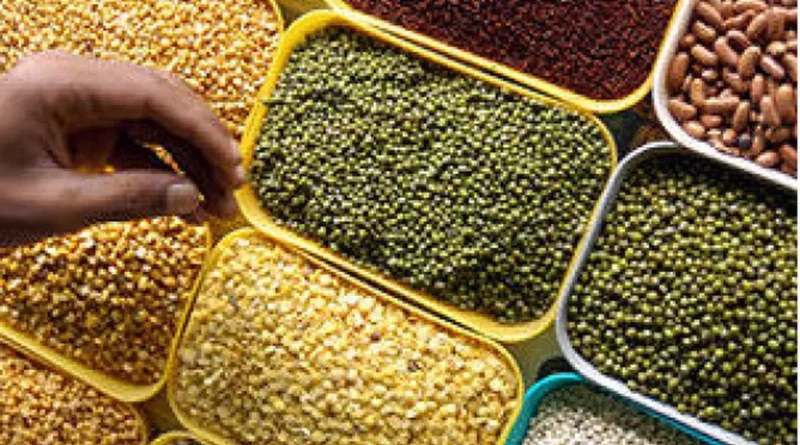Excess rainfall likely hit sowing of coarse cereals and pulses
By Ishaan Gera
Excess rainfall in parts of Rajasthan and Madhya Pradesh is likely beginning to weigh on India’s kharif sowing progress, particularly in coarse cereals and pulses, even as rice sowing has surged ahead of last year’s levels.
As of August 1, coarse cereal acreage was down 2.2 percent and pulses sowing slipped 0.3 percent from the same period last year, according to data released by the Department of Agriculture and Farmers’ Welfare.

The slowdown comes amid above-normal monsoon activity in several regions. Rajasthan has received 81 percent excess rainfall, while Madhya Pradesh recorded 47 percent above-normal rainfall. The heavy precipitation has likely disrupted sowing conditions in these key producing states.
Rajasthan leads the country in sowing of both pulses and coarse cereals. In 2024-25, the state along with Madhya Pradesh accounted for around 40 percent sowing of both pulses and coarse cereals.
July and August are typically crucial months for sowing, and current progress shows that pulses and coarse cereal acreagehas reached 78 percent and 76 percent of the respective normal area and target, suggesting a slower-than-usual pace.
For the 2025–26 kharif season, the government has set an ambitious target of 10.63 million hectares for coarse cereal sowing—higher than the normal sown area. In contrast, the target for pulses is 12.52 million hectares, slightly below the 13 million hectares considered normal.
In contrast to pulses and coarse cereals, rice sowing has performed strongly, supported by better reservoir levels and normal monsoon conditions in the central and southern states. Rice acreage is up 16.7 percent from last year and has reached 72.6 percent of the season’s target area of 44 million hectares.
According to data from the India Meteorological Department (IMD), as of August 4, nationwide rainfall was 4 percent above normal. Twenty-three states have received normal rainfall, six have seen excess, and seven remain in deficit.

As sowing progresses through the second half of the monsoon, continued excess rainfall in core agricultural zones could further influence sowing patterns and eventual output.
This article has been republished from The Moneycontrol.com

